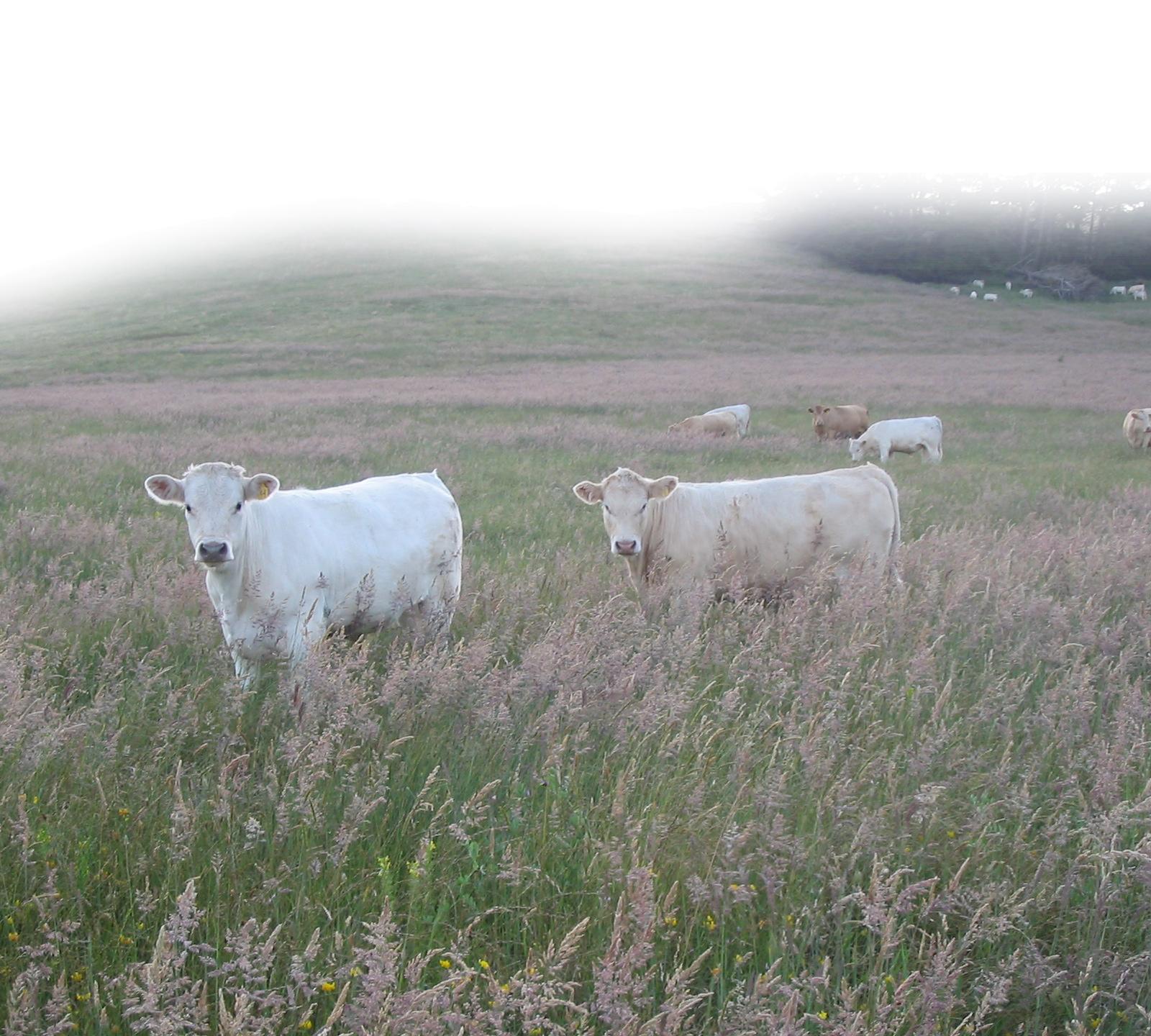Selling Whole Animals for Custom Processing
Why sell whole animals for custom processing?
- In a whole animal sale with custom exempt processing, the rancher can talk directly to the consumer, answering questions related to breed, feed, animal welfare and stewardship of the land.
- In a custom exempt transaction, the animal never leaves the ranch where it was raised, minimizing stress or potential for injury in transport.
- A custom exempt transaction allows the rancher to build a brand and a customer base that will return for more product without having to manage an inventory of finished cuts or the logistics of packaging, labeling, etc.
- Ranchers do not need to worry about fitting into the schedule at an inspected slaughter plant, and costs to the rancher for transport, harvest and processing are lower than at an inspected facility.
How does it work?
For the most part, the procedure for a custom slaughter on-ranch of a pre-sold animal in California lines up with the terms of the USDA’s “Custom Exempt Slaughter” rules. Most important is the requirement that the processing of the animal must be for the the benefit of the animal's owner, and the resulting meat is for their personal use only. The meat products cannot be “adulterated” or “misbranded” and should be labeled "Not for Sale".
Below are the 7 basic steps of selling whole animals for custom processing, followed by the key criteria for this transaction, divided into federal, state and local requirements.
| 1 |
Rancher sells whole or partial share of an animal to their customers. Rancher collects payment, noting sale and change of ownership in their records. |
| 2 |
Rancher schedules a visit from Brand Inspector to verify brand and change of ownership. (Cattle only) Rancher keeps blue slip for Mobile Slaughter Operator. |
| 3 |
Rancher schedules harvest with local Mobile Slaughter Operator. Rancher notifies customer(s) of date of harvest and destination for cut & wrap. |
| 4 | MSO harvests animal and transports carcass to Custom Exempt Processor. |
| 5 | Rancher provides Custom Exempt Processor with matching owner-animal information. |
| 6 | Processor contacts owner(s) to arrange cut preferences, pickup, pricing, etc. |
| 7 | Customer picks up meat from Custom Exempt Processor, pays for services. |
A Few Important People…
Livestock/Brand Inspector – Defined in California Food & Ag Code as “a hide and brand inspector. It includes the chief, regional brand supervisors, senior brand inspectors, investigators, and persons employed on a collaborative basis pursuant to Section 483 to carry out this division.” You can find your Brand Inspector here.
Mobile Slaughter Operator (MSO) -- This term is not explicitly defined in code, but is referenced in Section 2201.5 of the Food & Ag Code saying, “…mobile slaughter operators who perform the service of slaughtering cattle for the owner of the cattle on the owner’s premises are not licensed slaughterers pursuant to this chapter.” This means they provide slaughter services without the requirement of inspection. An MSO may provide their services as part of a Custom Livestock Slaughterhouse (below) which also provides cut-and-wrap services or they may operate as a stand-alone business. If harvesting cattle, an MSO must be registered with the state of California and subject to oversight by the Bureau of Livestock Identification. For sheep, goats, and hogs there is no registration requirement.
Custom Exempt Processor -- Like MSO, this term is not defined in code. Most people know these establishments as their “custom meat shop” or “custom butcher.” In California, a business that provides uninspected slaughter and/or processing for an animal’s owner might be referred to as a “Custom Livestock Slaughterhouse” or a “USDA Exempt Meat Establishment.” And if the establishment conducts processing that includes curing, drying, smoking or rendering, it must also be licensed as a “Meat Processing Establishment”. Under Federal Code, these operations are referred to as a “Custom Exempt Slaughterhouse” or “Custom Exempt Operation”. In addition to providing cut-and-wrap services for ranch-harvested animals, most Custom Exempt Processors also break down game animals for customers and turn USDA-inspected carcasses into retail cuts and value-added products like jerky or sausage.
Federal Rules:
- Payment from customer to rancher must take place prior to slaughter in order to ensure clear status of ownership
- Payment for slaughter as well as cut-and-wrap services must be transacted directly between the customer and the service provider
- In the case of partial animal purchases, all cuts delivered to a customer must come from the single animal they purchased and not mixed with parts from other animals
- The person who provides slaughter or processing services must meet the standards for the federal Custom Slaughter/Processing Exemption
- Records must be kept showing all details of the transaction (see “Record-Keeping” below)
- Any animal slaughtered must be healthy and result in food that is fit for human consumption
- Livestock must be slaughtered according to Humane Methods of Livestock Slaughter Act
- All facilities must be maintained in sanitary condition
- All products must be labeled “Not for Sale”
- Any custom exempt product must be kept separate by time or space from product that is for sale
California Rules:
- The site of the slaughter must be either:
- The livestock owner’s own premises OR
- The premises of the person who raised the livestock and who is not the owner of the livestock. In this case, “raised” is defined as feeding and caring for the cattle for at least 30 days prior to sale and slaughter
- Before slaughter, cattle must be inspected by the Bureau of Livestock Identification according to Section 21051 of the Food & Ag Code to verify brand and ownership.
- Mobile Slaughter Operators must follow the guidelines published by the Association of Food and Drug Officials (AFDO) for exempt slaughter.
- The person who raised the livestock must keep records of the transaction including the owners of the livestock and of the total number of animals slaughtered for one year (see “Record-Keeping” below)
- The Mobile Slaughter Operator must keep records including the total number of animals slaughtered and the premises where the slaughter occurred for one year (see “Record-Keeping” below)
- No more than 5 head of cattle can be slaughtered for this type of transaction on a single premises in a calendar month.
- After the slaughter, the carcass must be transported for the owner to an establishment for further processing. These establishments should comply with all rules for custom exempt processing.
- The meat cannot be sold and is exclusively for use by the owner (customer), members of the owner’s household, the owner’s employees, and non-paying guests.
County/Local Rules:
These will vary greatly from county to county. Consult your local Land Use/Planning Department for details. In most counties, the harvest of one’s own animals for their private consumption is not subject to the same oversight as commercial slaughter. However, if the frequency or number of harvests conducted on a given ranch rises to the point where it creates an environmental or public health problem, the county could be expected to intervene. Common sense on the part of ranchers in conducting these transactions and attention to proper management of the activity to stay clear of surface waters and maintain distance from property lines is essential.
The custom meat shops where cut and wrap of carcasses will take place are inspected by local Environmental Health Departments, similar to any butcher counter or other retail meat facility.
Pricing a Live Animal Transaction for Custom Processing:
Historically, ranchers selling whole or partial animals have based the price to their customers on hanging weight of the carcass. To satisfy federal and state rules, the transaction between customers and the rancher as well as the MSO and processor must be structured a little differently. The USDA’s guidelines for exempt slaughter and processing explain it this way: “Carcasses and other products of custom slaughter are not eligible to be sold. Therefore, sale or purchase of the live animal using the services of a custom exempt operator would be based on live weight, price-per-head, or other quantity pertaining to the live animal.”
Any sale for which the price is based on weight must use a commercial scale which has been inspected and sealed by the local Ag, Weights & Measures Department (otherwise known as the Ag Commissioner’s Office.) If the weighing of the animal is conducted without the customer present, then the person doing the weighing must be a licensed “Weighmaster”. A Weighmaster is simply someone who has been authorized by the state to oversee the weighing of a commodity for the purposes of sale or processing and who can issue a formal certificate stating the weight, price, etc.
- Becoming a Weighmaster is a simple process. Ranchers can apply online here. There is an annual fee of $75, but there is no test or other qualification. Up to once per year, the state Division of Measurement Standards (DMS) may visit to verify that the rancher is issuing certificates correctly with each transaction.
- As a Weighmaster, the rancher must issue a certificate with each transaction that contains specific information about the animal’s weight, etc. The state does not have these certificates for you to use, but UCCE has developed one in consultation with DMS that you can download and use here.
- One copy of the certificate goes into the rancher’s records and one goes to the customer along with the sales receipt. Records must be kept for four years.
- When applying for a Weighmaster license, ranchers can designate a “Deputy” who may also weigh the animals. This could be an assistant, an employee or simply a family member. The additional cost to add Deputies to a Weighmaster license is $20/year for each designated Deputy.
Record-Keeping
In order to demonstrate that this transaction is in keeping with state and federal rules, everyone involved needs to keep certain records. This also preserves transparency and traceability for the meat products.
Rancher Records:
- Name, address, phone number, email of customer buying the whole or partial animal
- Tag number/ID of animal being purchased
- Price paid
- Date of transaction transferring ownership
- Date of harvest
- Copy of Weighmaster Certificate (if rancher is selling animal by live weight)
Mobile Slaughter Operator (MSO) Records:
- Description of animal harvested, including brand and marks
- Name, address and telephone number of the person for whom services are being provided (the owner of the animal)
- Date of harvest and address of the property where the harvest took place as well as the total number of animals harvested
- Limit of 5 head per premises per month (not including animals for rancher’s own home use)
- The name and address of the establishment to which carcasses are transported for further processing
Custom Exempt Processor Records:
- Type, weight and tag/ID of animal
- Date carcass is received
- Name and address of the person for whom services are being provided (the owner of the animal)
- Name, address, telephone number and license plate number of the person delivering the carcass for processing
- The processor must also notify the Bureau of Livestock ID that they have received a carcass from an unlicensed slaughter
WORKSHOP: Selling Whole Animals for Custom Processing
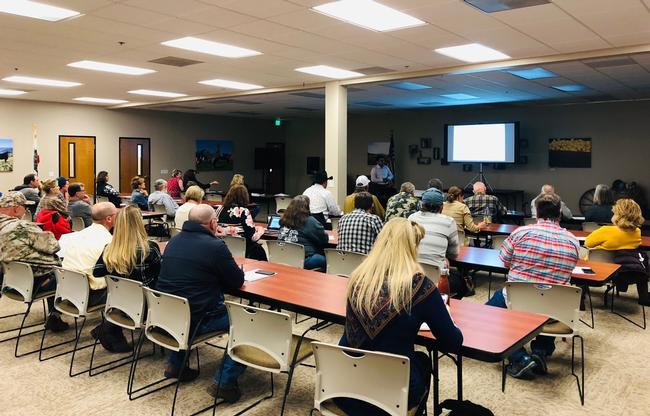
On November 19, 2019 Farm Bureau, CDFA and UCCE partnered on a workshop to explain AB 2114 and the new opportunity for cattle ranchers to sell whole or partial animals to their customers for custom processing.
See a full agenda for the workshop here and check out the presenters' slides and contact information below:
| CDFA Meat, Poultry & Egg Safety Branch – Licensed and Registered Operations Fernando M Umayam Jr, DVM Northern Area Supervising Veterinarian (OOC) CDFA-MPES (916) 900-5004 |
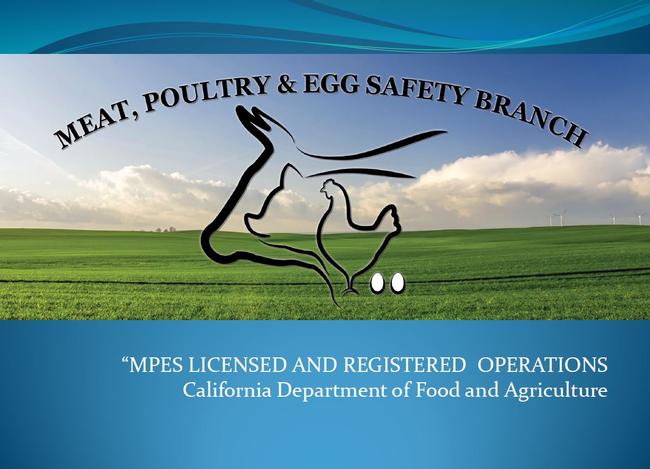
|
| AB 2114 – How to Sell Whole Animals for Custom Processing Vince Trotter Agricultural Ombudsman UCCE Marin County (415) 473-4204 |
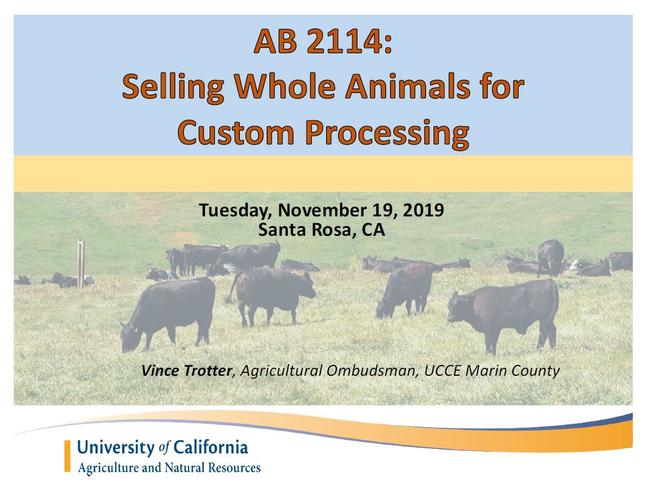
|
| Brand Inspection John Suther Branch Chief CDFA Bureau of Livestock Identification (916) 900–5006 |
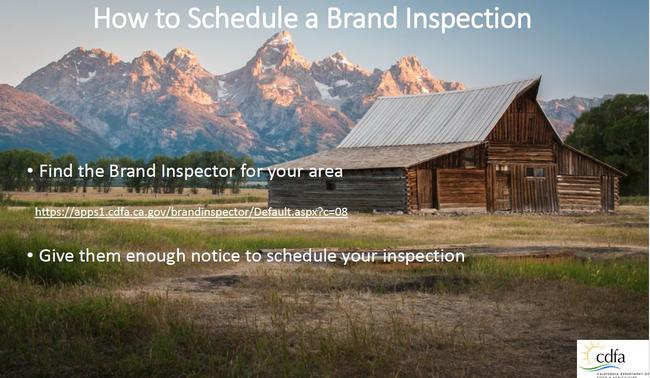
|
| Ranch Slaughter Economics Stephanie Larson, PhD Livestock Range Mgmt Advisor UCCE Sonoma County (707) 565-2621 |
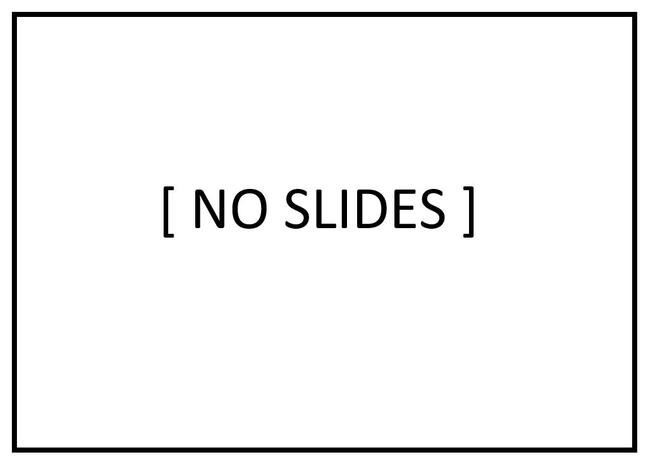
|
| Cattle Health & Management John Harper Livestock & Nat. Resources Advisor UCCE Mendocino, Lake County (707) 463-4495 |

|




